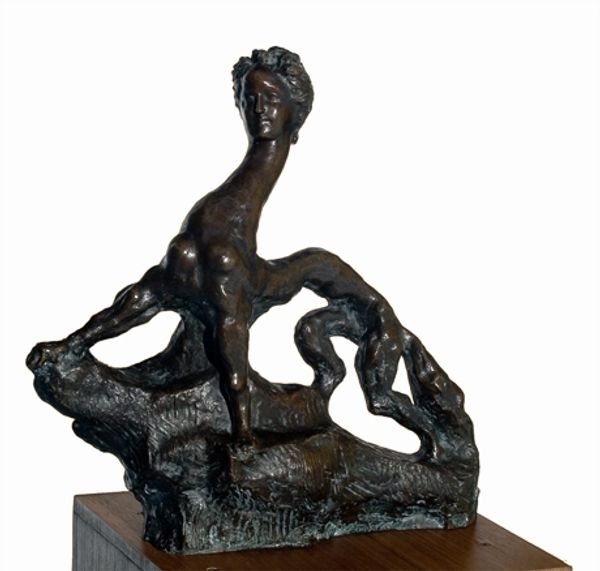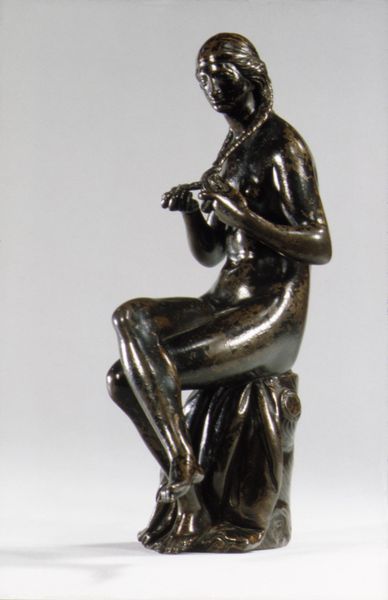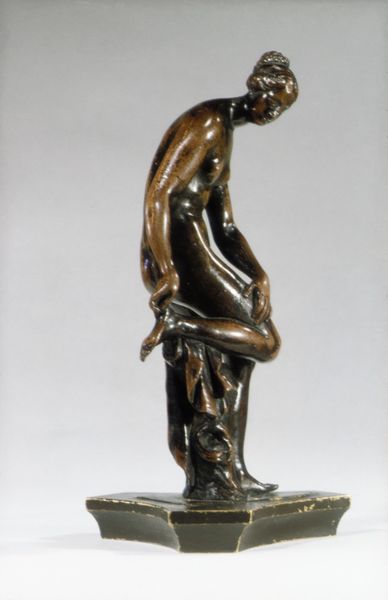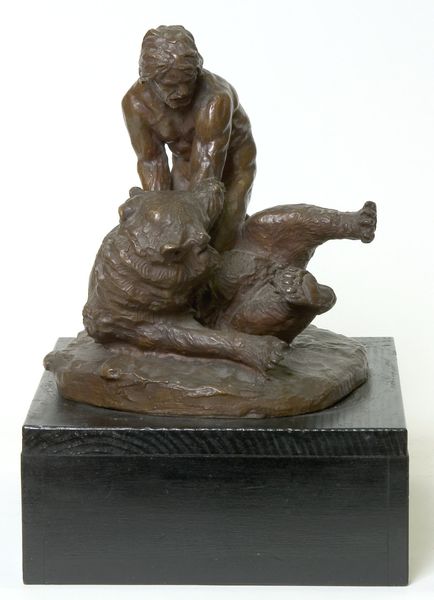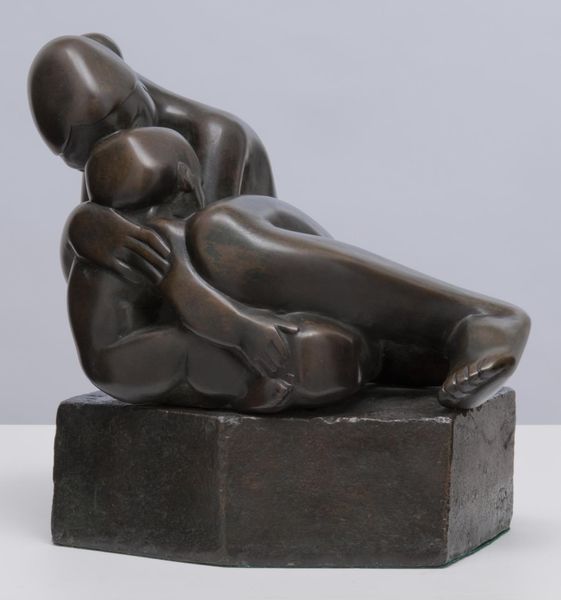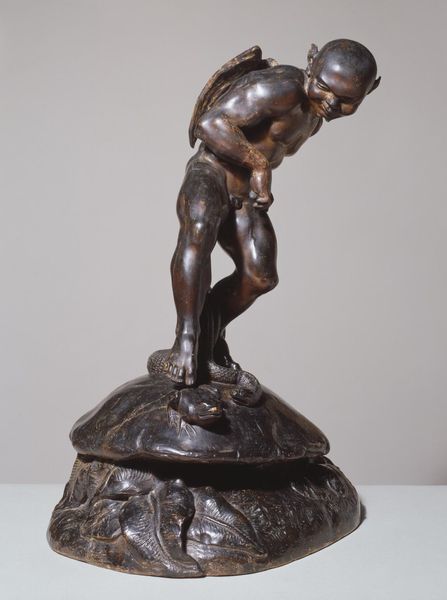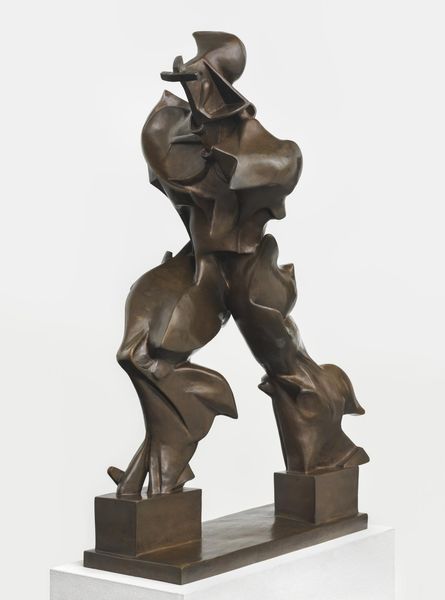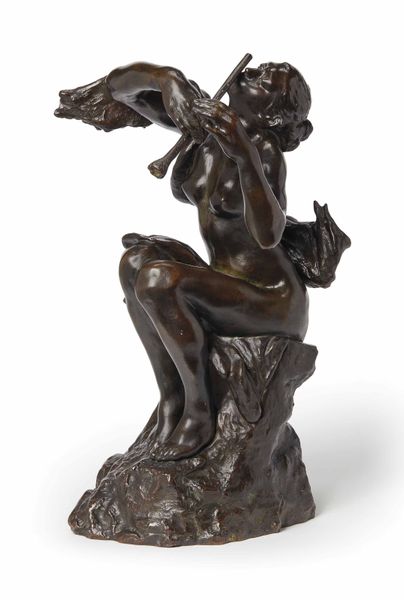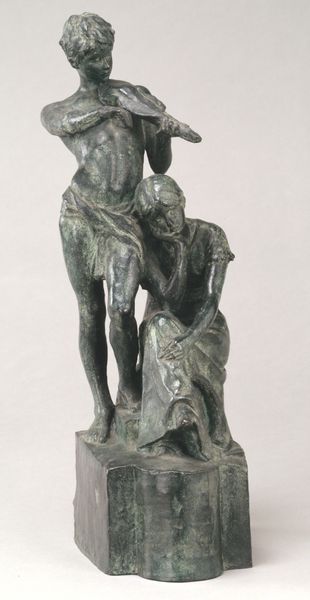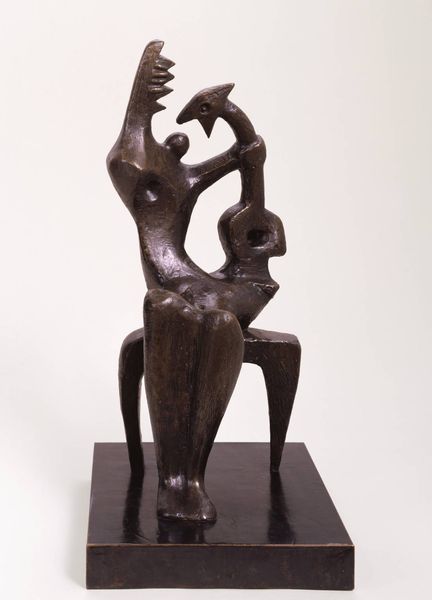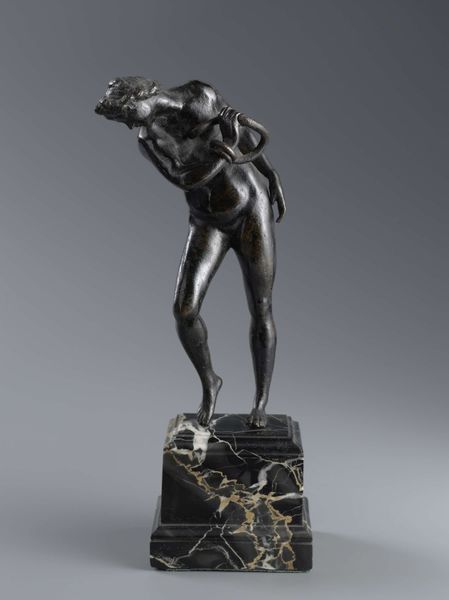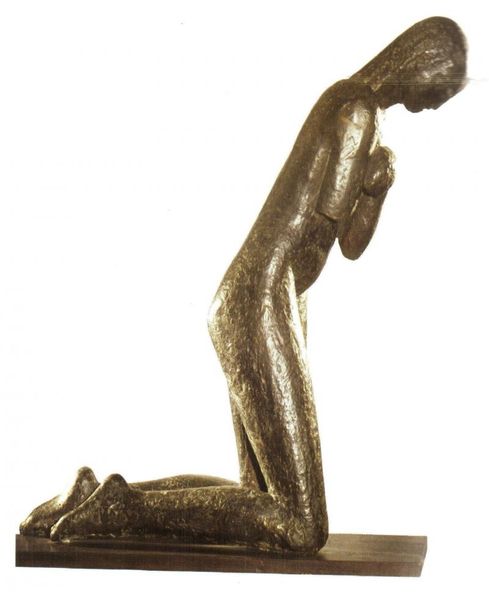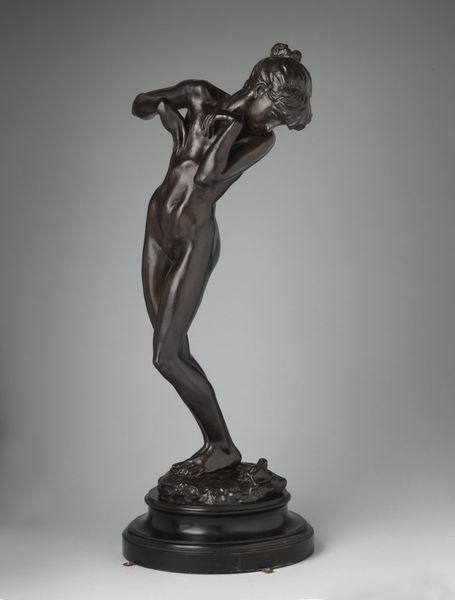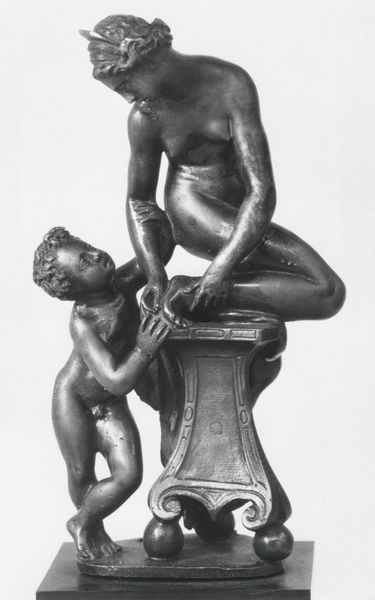
Dimensions: 26.2 cm (height) x 11.2 cm (width) x 17.4 cm (depth) (Netto)
Curator: We're looking at August Saabye's bronze sculpture, "A Seated Naked Fisherboy," created in 1856 and currently housed at the SMK in Copenhagen. Editor: It has this introspective feel; the muted bronze gives it a quietness, doesn’t it? The way the light catches the smoothness of the skin contrasts against the roughness of the rock is very effective. Curator: Absolutely, and it’s critical to situate it within the broader context of Romanticism and 19th-century sculptural representations of the male nude. Saabye here engages with notions of vulnerability and perhaps a certain precarity tied to the figure’s labor. Fishermen held a complex position in Danish society, both celebrated for their resilience, and seen as 'outside' societal structure. Editor: I'm seeing something less overtly political. The careful modeling of the anatomy, the almost mournful expression... it's pulling heavily from Classical sculpture, especially with its focus on idealised form. Curator: I agree the Classical roots are visible. It’s not as though Romanticism discarded historical references. But considering the era’s rising interest in national identity and folklore, there may be commentary embedded concerning rural communities whose ways of life were undergoing massive industrial changes. His nakedness removes class, in a way—democratizing and rendering him universally "human," if we can allow for such a notion. Editor: Hmmm. Regardless, the interplay of textures really amplifies the pathos of the piece. The way he clasps his hands together seems very deliberately composed, forcing our eye into that point. The slight downcast head and use of chiaroscuro make it incredibly touching. Curator: Considering Saabye’s biography adds another layer to its understanding. He began his career trained under Thorvaldsen, aligning himself with one stylistic approach, yet later shifted to embrace others, even studying in Paris. Editor: That journey to Paris explains why his work moves between neo-classicism and a form of realism. Overall, quite compelling formally and symbolically, really. Curator: Yes, placing this "Fisherboy" into the narrative of its era helps reveal multiple layers that encourage dialogues concerning labor, idealization, and changing notions of identity.
Comments
No comments
Be the first to comment and join the conversation on the ultimate creative platform.
